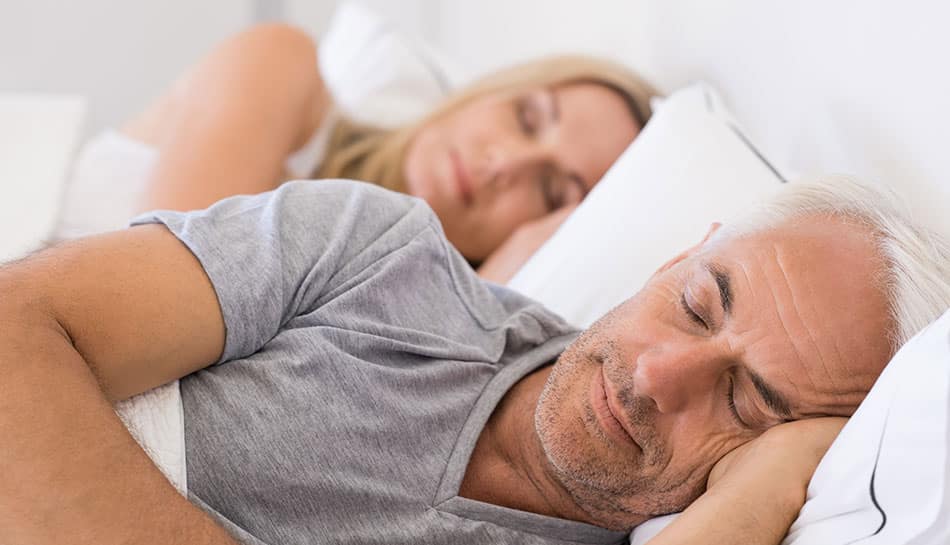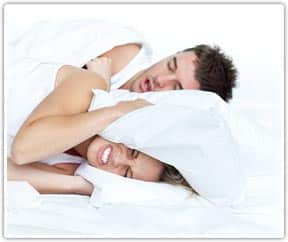Irregular breathing will prevent you from getting the oxygen you need during sleep. Don’t panic: we’re not saying you’ll suffocate in the middle of the night. The toll sleep apnea takes on your body is too subtle to measure after just one night of sleep. What hurts is that these oxygen-limited nights keep adding up week after week, month after month, and year after year until they build up into a truly serious health complication.

*Not real patients
There are 2 types of sleep apnea: central sleep apnea (CSA) and obstructive sleep apnea (OSA). CSA involves breathing trouble due to a weak effort from the lungs, while OSA describes limited airflow due to the airways being physically blocked. Most people with sleep apnea have OSA.
Snoring is more serious than being one of the many ways you annoy your spouse if it’s related to sleep apnea. Hey, if you’re single and no one’s sharing the bed, then no one can hear you snore and it’s not even a problem, right?
Not necessarily. Snoring is often not just a problem itself but rather a symptom of a more sinister issue: sleep apnea. The tens of millions of Americans that are affected by this potentially dangerous disorder experience interrupted or shallow breathing episodes (lasting about 10 to 60 seconds per episode) regularly during sleep. Some people experience hundreds of these episodes every night.

*Not real patients
Symptoms
Sleep apnea is characterized by the following symptoms:
- Trouble sleeping
- Snoring
- Lack of energy throughout the day
- Slow reflexes
- Mood swings
- Chronic headaches
- Elevated blood pressure
- Increased risk of heart disease and stroke
Treatments
OAT: most mild to moderate cases of sleep apnea are treated with oral appliance therapy (OAT). This treatment uses a state-of-the-art dental appliance to reposition your jaw in a way that allows air to flow in easier.
CPAP Machines: moderate to severe cases of sleep apnea are usually treated with a CPAP (Continuous Positive Airway Pressure) Machine. This system forces airways open and restores air flow with a small motor attached to a hose that runs to a facemask and sends air up the user’s nose.
CPAP machines are a lot more comfortable than they used to be, but we still have clients who find the positive pressure being forced down their throat to be too much. For these patients we recommend using an oral appliance combined with a CPAP machine to open up the throat and relieve some of the pressure.
The machines cost between a few hundred to a couple thousand dollars. Most insurance policies will cover the cost; talk to your insurance provider to confirm you’re covered and see if any co-pays are required.
Surgery: for the most severe cases of sleep apnea, surgery might be necessary. Removing the tonsils and other soft tissue of the throat, shrinking that soft tissue with radio waves, and cutting open the jaw/palate and spacing the structure apart with surgical implants are a few common procedures that treat sleep apnea by increasing the size of your airway.
Are you suffering from the symptoms of sleep apnea? Call us at 858-255-9689 for our San Diego office and we’ll get you the treatment you need right away.
